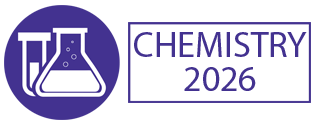Docking
Protein Docking Is The Process Of Bringing Two Biological Macromolecules, Such As Proteins, Into Close Proximity And Determining Their Most Likely Binding Conformation. This Process Plays An Important Role In Drug Development Because Drugs (Small Molecules) Interact With Proteins (Large Molecules) To Exert Their Biological Effects. In The Drug-Development Process, Researchers Need To Know How The Drug Molecule Binds To The Target Protein And How This Binding Affects The Protein’s Ability To Function. Protein Docking Determines Both The Type Of Interaction (Hydrogen Bonding, Hydrophobic, Ionic, Van Der Waals Etc.) And The Precise Binding Conformation Between Two Proteins. Several Techniques Used For Protein Docking, Such As Rigid-Body Docking, Shape Complementarity-Based Docking, Pharmacophore-Driven Docking And Co-Crystallography-Based Docking. Rigid-Body Docking Is The Simplest Type Of Protein Docking, By Using A Search Algorithm, And It Considers Both The Spatial And Electrostatic Properties Of The Two Molecules. Shape Complementarity-Based Docking Uses Surface Shape Complementarity To Calculate The Binding Energy Between Two Proteins, And Can Be Used As A Substitute For Rigid-Body Docking. Pharmacophore-Driven Docking Employs Prediction Of Drug Sites On The Target Protein, And Is Useful For Lead-Drug Optimization. Co-Crystallography-Based Docking Relies On Co-Crystallized Ligand-Protein Complexes To Determine The Binding Affinity Of An Unknown Ligand To The Target Protein. Overall, Protein Docking Is An Important Tool For Drug Discovery And Development. By Determining The Binding Conformation Between Two Proteins, Researchers Can Better Understand The Mechanism Of Action Of The Drug Molecule And Gain Insight Into How A Drug Can Be Modified To Enhance Its Therapeutic Efficacy.

Hossam A Gabbar
Ontario Tech University, Canada
Victor John Law
University College Dublin, Ireland
Alexander Bagaturyants
National Research Nuclear University MEPhI, Russian Federation
Sergey Suchkov
N.D. Zelinskii Institute for Organic Chemistry of the Russian Academy of Sciences, Russian Federation
Shree Niwas Chaturvedi
Centre for Aptitude Analysis and Talent Search, India
Pieter Samyn
SIRRIS, Belgium




Title : Advances in plasma-based radioactive waste treatment
Hossam A Gabbar, Ontario Tech University, Canada
Title : Unraveling the ultrastructure and functions of the neuronal membrane skeleton using super-resolution fluorescence microscopy
Zhou Ruobo, Djillali Liabes University of Sidi Bel Abbes, Algeria
Title : Solar box cooker dehydration, and relative humidity endpoint detection, of lamiaceae culinary leaves on the island of Crete
Victor John Law, University College Dublin, Ireland
Title : Nutrient and heavy metal loads from the Ribeiras to Coastal zones: A land-ocean continuum perspective in Madeira Island
Aracelis Del Carmen Narayan Rajnauth, University of Porto, Portugal
Title : Prospective polyoxometalate-based covalent organic framework heterogeneous catalysts
Arash Ebrahimi, Comenius University Bratislava, Slovenia
Title : Eliminating implant failure in humans with nano chemistry: 30,000 cases and counting
Thomas J Webster, Brown University, United States